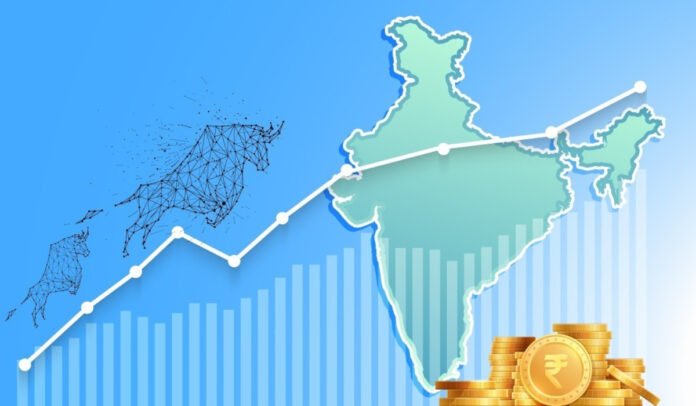India recorded a 7.8% GDP growth in the April–June quarter, exceeding economists’ expectations. Much of this was driven by government spending, manufacturing gains, strong services, and farm output. However, nominal GDP growth fell to 8.8%, indicating subdued inflation and weaker pricing power.
Simon at Capital Economics commented: “Despite the reciprocal penal tariff, we are maintaining our growth range of 6.3%–6.8% for the full year.” Chief Economic Adviser V. Anantha Nageswaran described the growth as a “surprise acceleration,” noting continued economic expansion despite U.S. tariffs.
Equity Markets Unmoved by Economic Resilience
Equity markets have not mirrored the GDP optimism. Foreign investors have pulled about $15 billion out of Indian equities this year. Market experts point to weak corporate earnings, global banking uncertainty, and aggressive U.S. tariffs as primary deterrents to investor confidence.
GST Cuts Seen as Shield Against Tariff Shock
CII President Rajiv Memani said, “The GST cuts, reforms, and lower interest rates will help mitigate steep 50% American tariffs—GST cuts should more than offset their impact.” His statement highlights industry’s belief that GST rationalization could provide relief to exporters and consumers alike.
Debate Over Sustainability of Growth
Analysts remain cautious. A report by Goldman Sachs warned the strong GDP figure may be inflated due to a soft deflator and front-loaded exports. Moreover, HSBC estimates that the exaggeration could be up to a full percentage point, suggesting underlying demand may not be as robust.
Economic Outlook Solid But Vigilance Needed
India’s economy continues to defy external pressures—posting strong GDP growth despite tariffs and cautious markets. Sustaining this momentum will depend on calibrated policy actions: boosting consumer demand, ensuring market confidence, and implementing structural reforms. GST rationalization emerges as a strategic lever, but the path ahead requires cautious optimism.





















